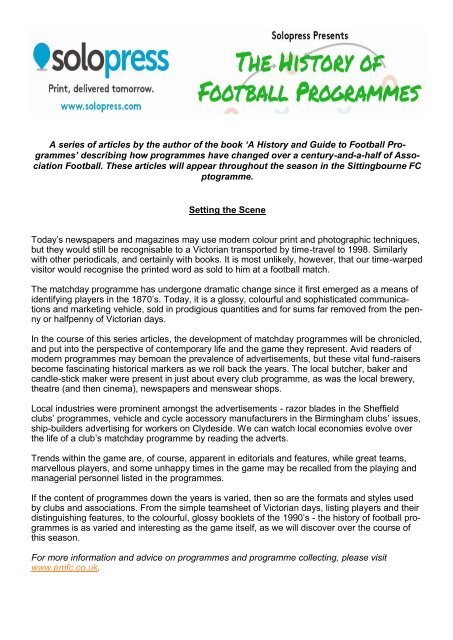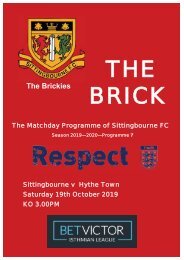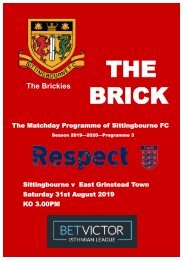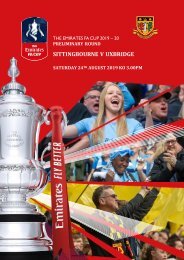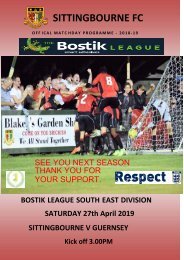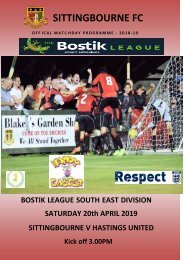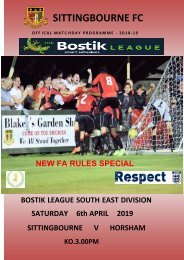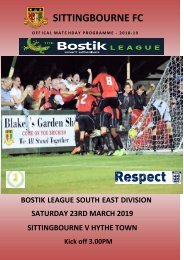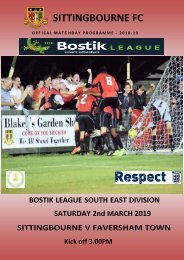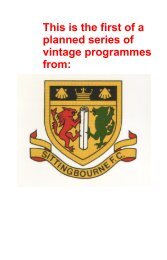crayvalley200819_full
You also want an ePaper? Increase the reach of your titles
YUMPU automatically turns print PDFs into web optimized ePapers that Google loves.
A series of articles by the author of the book ‘A History and Guide to Football Programmes’<br />
describing how programmes have changed over a century-and-a-half of Association<br />
Football. These articles will appear throughout the season in the Sittingbourne FC<br />
ptogramme.<br />
Setting the Scene<br />
Today’s newspapers and magazines may use modern colour print and photographic techniques,<br />
but they would still be recognisable to a Victorian transported by time-travel to 1998. Similarly<br />
with other periodicals, and certainly with books. It is most unlikely, however, that our time-warped<br />
visitor would recognise the printed word as sold to him at a football match.<br />
The matchday programme has undergone dramatic change since it first emerged as a means of<br />
identifying players in the 1870’s. Today, it is a glossy, colourful and sophisticated communications<br />
and marketing vehicle, sold in prodigious quantities and for sums far removed from the penny<br />
or halfpenny of Victorian days.<br />
In the course of this series articles, the development of matchday programmes will be chronicled,<br />
and put into the perspective of contemporary life and the game they represent. Avid readers of<br />
modern programmes may bemoan the prevalence of advertisements, but these vital fund-raisers<br />
become fascinating historical markers as we roll back the years. The local butcher, baker and<br />
candle-stick maker were present in just about every club programme, as was the local brewery,<br />
theatre (and then cinema), newspapers and menswear shops.<br />
Local industries were prominent amongst the advertisements - razor blades in the Sheffield<br />
clubs’ programmes, vehicle and cycle accessory manufacturers in the Birmingham clubs’ issues,<br />
ship-builders advertising for workers on Clydeside. We can watch local economies evolve over<br />
the life of a club’s matchday programme by reading the adverts.<br />
Trends within the game are, of course, apparent in editorials and features, while great teams,<br />
marvellous players, and some unhappy times in the game may be recalled from the playing and<br />
managerial personnel listed in the programmes.<br />
If the content of programmes down the years is varied, then so are the formats and styles used<br />
by clubs and associations. From the simple teamsheet of Victorian days, listing players and their<br />
distinguishing features, to the colourful, glossy booklets of the 1990’s - the history of football programmes<br />
is as varied and interesting as the game itself, as we will discover over the course of<br />
this season.<br />
For more information and advice on programmes and programme collecting, please visit<br />
www.pmfc.co.uk.


